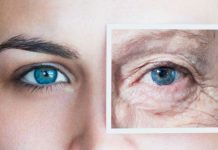‘Clean care for all – it’s in your hands’
On the occasion of World Hand Hygiene Day, we tell you how hand washing protects you against several infections and ideal ways to maintain hand hygiene
A million deaths a year can be prevented if everyone starts routinely washing their hands, says a study published in the journal The Lancet. Poor hand hygiene is one of the major causes behind many common infections like cold and flu, diarrhoea, and dangerous ones like sepsis, hepatitis A, etc. So, maintaining hand hygiene by washing your hands regularly is the key to infection prevention and bringing down the death toll of infection-related deaths. World Hand Hygiene Day is celebrated every year on 5th May with the intention of infection prevention and control and encouraging more people to keep their hands clean. This global campaign by the World Health Organisation, launched in 2009, also targets healthcare professionals who need to follow standard hand hygiene practices all the more. This is because a significant number of deadly infections have been found to spread from healthcare facilities. The theme for this year’s World Hand Hygiene Day is ‘Clean care for all – it’s in your hands’ is WHO’s call to action for health workers, leaders of infection prevention and control, owners of health care facilities and health ministries across various countries.
HOW TO MAINTAIN HAND HYGIENE
The germs that sneak into our body and make us fall prey to a variety of infections mostly lurk in our foods, water and certain surfaces like dustbin bag, TV remote, keyboard, kitchen mop, door knobs, mobile phone, floor mat, etc. But how do these microorganisms enter your body from these germ hotspots? Well, the answer is pretty easy: Your hands. So it doesn’t need to be mentioned that your hands are the best weapons to keep these germs at bay. Wash them diligently and regularly after using toilet, changing nappies, smoking, handling animals, touching your rubbish bin and other contaminated surfaces, before and after cooking and eating. Washing hands seems to be a simple task. But if it’s not done properly, the risk of germs staying back becomes high even after you wash your hands. On this World Hand Hygiene Day, we share the steps of washing your hands properly.

- Firstly, wet your hands with clean water.
- Then, apply liquid soap on your hands and rub them together to create lather.
- Rub your hands for around 20 seconds. Pay special attention to nail corners, areas in between two fingers, etc.
- After this, rinse your hands with clean water. Make sure, the soap is nicely removed and there is no residue under your nails or between your fingers.
- The last step includes drying your hands well using a clean towel. You can also let your hands dry in the air.
KEEP THESE INFECTIONS AT BAY
According to the Centers for Disease Control and Prevention, 80 per cent of common infections are spread through hands. So hand hygiene is of utmost significance to prevent infections. According to general wisdom in the field, cleaning your hands at least five times a day can significantly decrease the frequency of colds, influenza and other infections. Another CDC data says that healthcare providers wash their hands less than half of the times they are supposed to, on an average. This increases the spread of healthcare-associated infections. On this World Hand Hygiene Day, we tell you about the most common infectious diseases that you can stay away from if you wash your hands religiously as and when required.
Cold and Flu
When you are close to a person suffering from cold and flu your hands get easily contaminated by these viruses when he coughs and sneezes. As you put your infected hands in your mouth or nose unknowingly, the tiny germs conveniently enter your body. So, the best way to protect yourself against cold and flu infections is to wash your hands quite often through the day as already mentioned. Watering your hands each time you cough or sneeze is also important to prevent the germs from spreading to others. The typical symptoms of this condition include mild to moderate fever, coughing, sneezing, muscle spasm, headache and tiredness. You need to rest sufficiently during this viral attack. Cold and flu viruses are generally self-limiting. So the symptoms subside within three days. But if they don’t, or your body temperature is abnormally high, consult your doctor.
Diarrhoea
According to a study published in the Journal of Applied Microbiology, “Washing hands with soap and water could reduce diarrhoea-associated deaths world-wide by up to 50 per cent.” This is a disease that is usually caused by a bacterial (salmonella), viral (norovirus or rotavirus), or parasitic (giardia) infection of the bowel. Diarrhoea is characterized by nausea, vomiting, watery faeces, abdominal pains etc. The microorganisms that cause this gut infection are the inhabitants of food, water and faecal matters. They get inside your body after coming in contact with your hands. So, keeping your hands clean by washing them frequently is a must to prevent diarrhoea. However, if diarrhoea has already hit you, make sure that you take lots of fluids like fruit juice, water, coconut water, etc to keep yourself hydrated as dehydration is the most dangerous outcome of this condition. During this time, you also need to take some self-care measures to relieve the symptoms. Avoid caffeine, fibre- rich and sugary foods. Place a hot water bag on your stomach to get rid of abdominal cramps. Mostly, this condition resolves on its own in a day or two.
Respiratory tract infections
These are the infections caused by respiratory syncytial virus, streptococcus bacteria or some fungi which affect your lungs and are usually lurk in dirty hands. Infections can affect both the lower respiratory tract and the upper respiratory tract. The former may lead to conditions like bronchitis, pneumonia, bronchiolitis, and tuberculosis. The latter can give you common cold, influenza, sinusitis, tonsillitis, and laryngitis. These conditions are commonly characterised by dry cough, fever, headache, difficulty breathing, chest pain, and a stuffed or a runny nose. However, your risk of these conditions can be significantly reduced by hand washing. According to a study published in the journal Tropical Medicine & International Health, handwashing can reduce the risk of respiratory infections by 16 per cent.
Eye infections
Eye infections are mostly caused by bacteria, fungi, and viruses that get into the eyes through your hands. Some of the common eye infections include conjunctivitis, keratitis, trachoma, endophthalmitis, and blepharitis among others. All these conditions mostly start with similar symptoms like red eyes, itching, blurry vision, eye discharge, light sensitivity, swollen eyes, and pain in eyes. It is advised not to touch your eyes with dirty or unwashed hands. In case you have already developed an eye infection, your doctor may prescribe you certain antibiotic eye drops, compresses, and anti-viral medications.

Hepatitis A
It is a highly contagious liver infection caused by the hepatitis A virus. This virus is transmitted when you eat contaminated foods prepared by people who haven’t washed their hands after using the bathroom. According to the National Institute of Allergy and Infectious Diseases, “Digesting even microscopic traces of contaminated faecal matter can cause transmission of this disease.” Hepatitis A is characterised by symptoms like jaundice, loss of appetite, fever, stomach pain, nausea, fatigue, and diarrhoea. There is no specific treatment option for this inflammatory viral condition. Doctors basically focus on symptom control. However, this is a vaccine-preventable disease.
Nosocomial infections
These are infections that patients develop in a hospital and are caused by organisms which are resistant to antibiotics. An infection is considered as nosocomial if it occurs within 72 hours after you get admitted to the hospital. This infection is caused by germs and bacteria like MRSA and E.coli that are usually found on our hands because of poor hand hygiene. Some of the common diseases caused by nosocomial infections include urinary tract infection, meningitis, pneumonia, etc. These are commonly characterized by symptoms like fever, headache, cough, vomiting, shortness of breath etc. To treat such infection, your doctor may prescribe you antibiotics and recommend bed rest and high fluid intake.
Source: TheHealthSite




